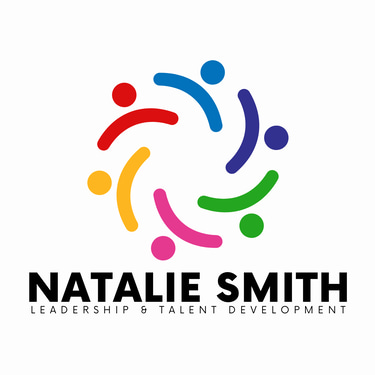How to Fix Workplace Conflict Forever - Part 1
In part one of this 2-part blog, turn workplace conflict into opportunities for growth. Identify conflict types, their impacts, and ways to improve team communication.
Introduction
Conflict at work can feel like an unavoidable part of office life, but did you know it can actually be a source of growth and improvement? Misunderstandings, tension, and disagreements are bound to arise in any workplace where diverse personalities and perspectives come together. However, with the right strategies, these conflicts don’t have to be destructive. Instead, they can become stepping stones toward better communication, stronger relationships, and a more positive team environment.


1. Understanding the Nature of Conflict
Conflict is a natural part of human interaction, and the workplace is no exception. When different perspectives, goals, or work styles collide, friction can result. But rather than seeing conflict as something purely negative, it’s important to view it as an opportunity for learning and collaboration.
Common causes of workplace conflict include:
Differences in values and priorities
Communication style clashes
Varied approaches to work processes and problem-solving
For example, one team member may prioritize precision while another values speed, leading to tension over project deadlines. Recognizing these fundamental differences is the first step in approaching conflict with a problem-solving mindset, allowing you to turn potential obstacles into opportunities for innovation.
Watch video: "How to Fix Workplace Conflict Forever - Part 1!"


2. Types of Workplace Conflict
Workplace conflicts typically fall into four main categories, each requiring a unique approach for effective resolution:
Task Conflict: Disagreements about goals, responsibilities, or project outcomes. Examples include team members having different views on project execution or deadlines.
Relationship Conflict: Interpersonal issues rooted in personality differences. For instance, a direct communicator may unintentionally clash with a more sensitive colleague.
Process Conflict: Disputes over how work should be done, such as disagreements on roles, schedules, or methodologies. Process conflicts often arise from resource allocation or workload distribution.
Resource Scarcity: Competition for limited resources, like budgets, office space, or equipment. This type of conflict frequently occurs between departments vying for shared resources.
Recognizing these conflict types helps you:
Respond more effectively to each situation
Use conflict as a learning experience
Minimize misunderstandings by choosing the right approach for resolution
Related Video "How to Fix Workplace Conflict Forever - Part 2!"


3. The Impact of Unresolved Conflict
Leaving conflicts unresolved doesn’t just affect those directly involved—it can harm the entire workplace. Unaddressed issues can spread negativity, reduce productivity, and increase stress across the team. Studies indicate that unresolved conflict can lead to:
Lower morale and job satisfaction
Higher employee turnover
Increased stress and burnout among team members
Over time, unresolved conflicts can create a toxic work environment, where tension and resentment build, further impacting team cohesion and performance. The financial costs are also significant, with time lost to conflict-related disruptions and expenses associated with hiring and training new employees to replace those who leave. Addressing conflict early on is essential not only for morale but also for productivity and cost management.
Related Video "Workplace Drama? Turn it into Teamwork! Conflict Resolution Secrets Revealed"


Taking Action
Understanding conflict is only the beginning. Taking action means applying what you’ve learned to create a supportive, respectful work environment where communication thrives. Whether you’re a leader managing a team or a team member looking to improve your own communication, these strategies can help transform how conflicts are handled.
Unlock Your Potential with a Free 1-Hour Coaching Session
Are you ready to take your personal and professional growth to the next level? I’m offering a Free 1-hour coaching session tailored to your unique goals—whether it’s for career advancement, personal development, starting a business, side hustle or how to earn passive income. Don’t miss out! Book Your Free Session Now and start your journey to success! https://bit.ly/FreeCoachingNow
Download Your Free SMART Goals Resources
You can download two powerful tools to kickstart your goal-setting journey. Scroll down on the home page to 'Discover Resources to Thrive' to access these free resources.
SMART Goals Resource Guide: Learn how to create Specific, Measurable, Achievable, Relevant, and Time-bound goals.
SMART Goals Tool Template: Apply what you’ve learned from the guide with this practical template to streamline your goal-setting process.
Related Videos
Related Blogs
Coming Soon
Related Articles
Recommended Tools and Resources:
50% off all of my Leadership and Talent development Digital Products. DISCOUNT CODE: RG50%D: https://bit.ly/TheGrowthGateway
Influencing Skills Self-Assessment and Development Toolkit: Transform Conflict into Collaboration - Workplace conflict often stems from misunderstandings and misaligned communication. The Influencing Skills Self-Assessment and Development Toolkit provides actionable strategies to build trust, improve communication, and lead your team through challenges with confidence.
Recommended Tools and Resources
Another valuable resource that has been instrumental in addressing team dynamics and improving leadership skills is The Five Dysfunctions of a Team. This book is essential for understanding and improving team dynamics, building trust, and fostering collaboration. You can check it out and purchase it here: The Five Dysfunctions of a Team.
Conclusion
Effective conflict resolution is more than a skill—it’s a vital part of a healthy workplace culture. By understanding the nature of conflict, identifying its types, and addressing issues before they escalate, you’re fostering an environment where everyone feels valued and heard.
Remember, a well-managed workplace:
Builds stronger relationships and trust among team members
Creates opportunities for teamwork and collaboration
Fosters a positive, productive environment where everyone can thrive
As you implement these strategies, keep in mind that building a positive workplace takes time and patience. With each effort, you’re moving one step closer to a more open, resilient, and harmonious workplace.
Disclaimer: Links included are affiliate links. If you purchase products using the links included, I may receive a commission however, there is no additional charge to you.





